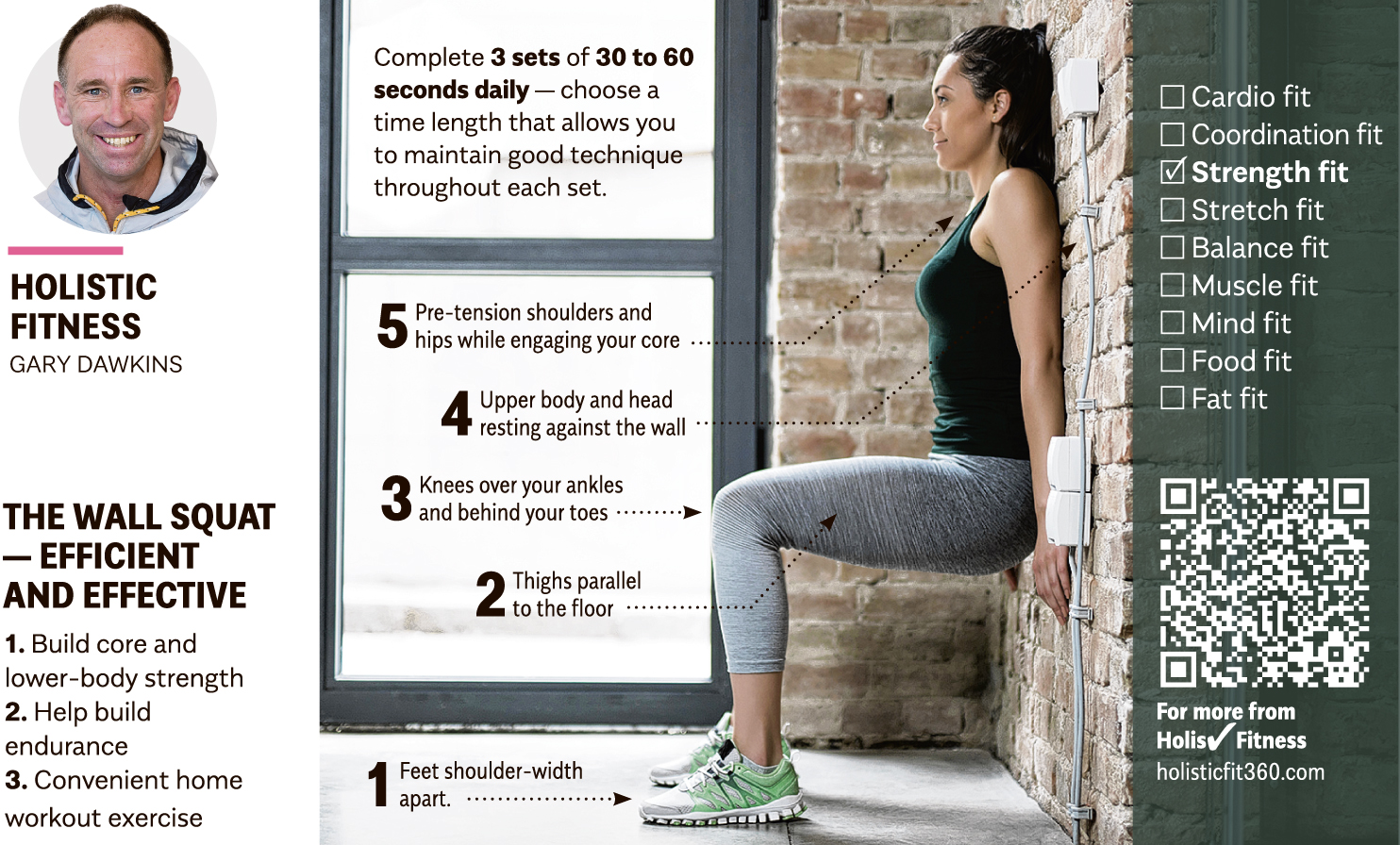
1. Wall squats build core and lower-body strength. Wall squats are an effective exercise for building strength and tone in your glutes, hamstrings, and quadriceps—especially your inner thighs. In addition to the legs, wall squats also activate your abdominal muscles to help build core strength.
2. Wall squats help build muscular endurance. Wall squats are an isometric exercise, meaning the body remains in a static position throughout the workout. Consistent practise will help improve muscular endurance, enabling you to hold the wall squat for increasingly longer periods of time.
3. Wall squats are a convenient home workout. Few leg exercises are as convenient and effective as wall squats. They require no equipment and strengthen and tone the major leg muscles. They are also a very good exercise for helping with the efficiency of walking and running.
Wall squats vs. standing squats: What’s the difference?
Wall squats and standing squats use a similar range of motion to target the same muscle groups. However, there are a couple of notable differences between them.
1. Isometric vs. plyometric: Wall squats are an isometric exercise, whereas standing squats are a plyometric exercise. This means that your body remains static during wall squats but is active during standing squats.
2. Cardio level: Though both exercises are effective for building strength in your core and legs, standing squats will more effectively elevate your heart rate and activate your cardiovascular system.












